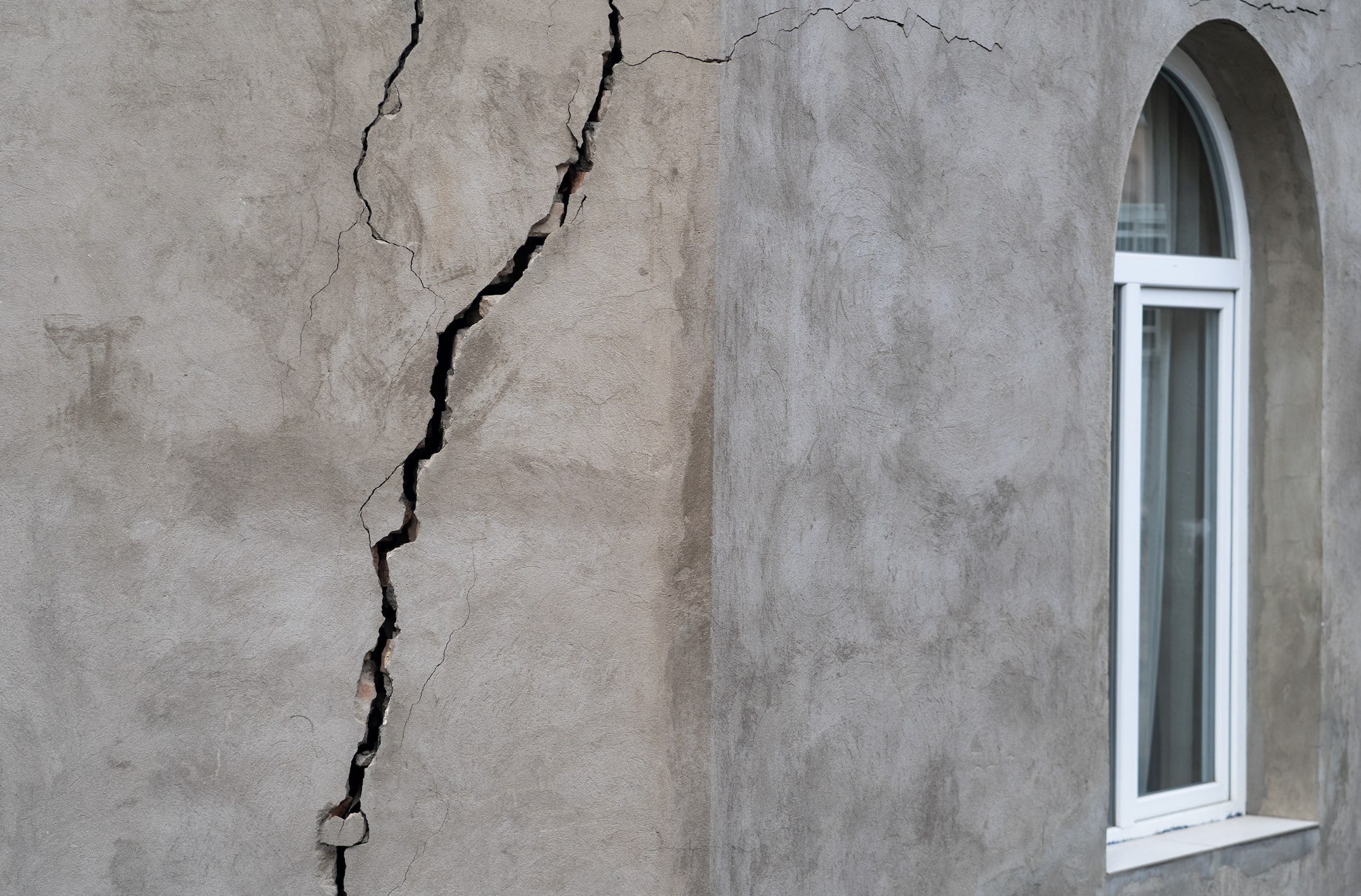As a homeowner in the Texas Hill Country, maintaining your property can be a unique challenge. The region's distinct environmental factors, from expansive clay soil to extreme weather conditions, require a tailored approach to home care. In this article, we'll explore the common, yet often overlooked, issues that Texas homeowners face and offer practical solutions to keep your property in top shape.
From foundation cracks to HVAC system struggles, the Texas climate and terrain can take a toll on your home. By understanding these challenges and implementing proactive maintenance strategies, you can protect your investment and ensure the longevity of your property. Join us as we dive into the world of Texas home maintenance and uncover the hidden problems that may be lurking in your Hill Country abode.
Common Foundation Issues in Texas Homes
Texas homeowners often face unique foundation challenges due to the region's expansive clay soil. This soil type can swell and shrink dramatically with changes in moisture content, leading to significant foundation movement and potential cracks. Proper prevention and maintenance strategies are crucial to protect the structural integrity of Texas homes.
Expansive Clay Soil Impact
The expansive clay soil found in many parts of Texas can cause the ground to shift, heave, or settle unevenly, putting strain on a home's foundation. This soil movement can lead to cracks in the foundation, walls, and floors, compromising the overall stability of the structure.
Foundation Crack Prevention
To prevent foundation cracks, homeowners should consider regular inspections, proper grading and drainage, and the use of moisture-resistant foundation materials. Addressing any foundation issues promptly can help mitigate the impact of soil movement and protect the home from further damage.
Drainage System Maintenance
Maintaining a well-functioning drainage system is essential for preventing foundation problems in Texas homes. Ensuring proper drainage around the home's perimeter, clearing gutters and downspouts, and redirecting water away from the foundation can help minimize soil saturation and the associated risks of foundation movement and cracks.
HVAC System Challenges in Texas Climate
Maintaining an efficient air conditioning system is a crucial concern for Texas homeowners. The state's scorching summers and unpredictable weather patterns can take a toll on HVAC equipment, compromising cooling performance and driving up energy costs. Proactive HVAC maintenance is essential to ensure optimal air conditioning efficiencyand manage energy expenditures during the hotter months.
Texas' extreme climate can strain HVAC systems, leading to increased wear and tear on components. Proper maintenance, including regular filter changes and professional tune-ups, can help maximize the system's lifespan and maintain peak air conditioning efficiency. Homeowners should also consider upgrading to more energy-efficient HVAC models, which can significantly reduce energy costs and environmental impact.
In addition to routine maintenance, Texas homeowners may need to explore strategies to manage cooling demands during heatwaves. This may involve adjusting thermostat settings, using energy-efficient appliances, and ensuring proper insulation and ventilation throughout the home. By proactively addressing HVAC challenges, homeowners can maintain a comfortable living environment while minimizing the impact on their energy bills.
Problems in Home Maintenance in Texas Hill Country
The Texas Hill Country is renowned for its stunning limestone formations and serene landscapes, but these very features can pose unique challenges for homeowners. From the impact of limestone erosion to the complexities of managing the fluctuating water table, maintaining a home in this picturesque region requires specialized knowledge and attention.
Limestone Formation Effects
The prominent limestone outcroppings that define the Hill Country's topography can be both a blessing and a curse for homeowners. While the stone lends a natural charm to the area, it is also susceptible to weathering and erosion over time. This can lead to foundation issues, sinkholes, and other structural problems that require careful monitoring and prompt intervention.
Water Table Fluctuations
The Hill Country's varied terrain and unpredictable rainfall patterns can cause significant fluctuations in the water table, leading to both flooding and drought conditions. Homeowners must stay vigilant in managing their properties' drainage systems and monitoring for any signs of water table-related problems, such as cracks in the foundation or dampness in the basement.
Native Vegetation Management
The Hill Country is home to a diverse array of native plant life, which can be both a blessing and a challenge for homeowners. While these plants are well-suited to the local climate and ecosystem, they can also pose risks to the home's infrastructure if left unchecked. Effective management of native vegetation, such as regular trimming and pruning, is crucial to maintaining the property's integrity and aesthetic appeal.
Hidden Plumbing Issues Behind Texas Walls
Texas homeowners often overlook the unseen challenges lurking within their plumbing systems. From pipe degradation due to the region's hard water to the difficulties of detecting leaks, these hidden problems can silently compromise the quality and efficiency of a home's water supply.
The harsh mineral content in Texas' water can wreak havoc on pipes over time, leading to corrosion, scaling, and eventual pipe failure. Proactive leak detection is essential to mitigate water damage and maintain water quality. Advanced techniques like infrared thermal imaging and acoustic monitoring can identify issues before they become catastrophic.
Ensuring adequate water pressure and flow is another critical aspect of Texas home maintenance. Mineral buildup and pipe degradation can restrict water movement, leading to reduced efficiency and poor water quality. Regular system flushing and professional inspections can help homeowners stay ahead of these hidden plumbing problems.
Roof Maintenance in Extreme Weather Conditions
Texas homeowners know all too well the challenges of maintaining a roof in the face of extreme weather conditions. From scorching heat to severe storms, the roof is often the first line of defense against the elements. Proper roof maintenance is crucial in ensuring longevity and weather resistance, protecting the home and its occupants.
Heat Impact on Shingles
The relentless Texas sun can take a heavy toll on roof shingles, causing them to become brittle and more susceptible to cracking or breaking. Regular inspections and timely repairs are essential to prevent premature shingle deterioration and maintain roof longevity. Homeowners should also consider upgrading to more heat-resistant roofing materials to improve their home's weather resistance.
Storm Damage Prevention
High winds, hail, and heavy rain are common occurrences in Texas, and they can wreak havoc on a home's roof. Proactive steps, such as securing loose shingles, clearing debris, and ensuring proper attic ventilation, can go a long way in protecting the roof from storm-related damage. Regularly inspecting the roof and addressing any issues promptly can help extend its lifespan and safeguard the home's interior from the elements.
Proper Ventilation Solutions
Adequate attic ventilation is a critical component of roof maintenance, particularly in Texas' extreme climate. Proper ventilation helps regulate the temperature in the attic, reducing the strain on the roof and improving energy efficiency. Homeowners should consider upgrading their attic ventilation system to ensure optimal airflow and prevent issues like premature shingle deterioration or moisture buildup.
Pest Control Challenges Unique to Texas
Texas homeowners face unique pest control challenges due to the state's diverse climate and abundant wildlife. From termites that can silently compromise the structural integrity of homes to rodents that can harbor diseases, pests pose a significant threat to Texas residences. Effective termite prevention and rodent control are essential to safeguarding your investment.
Termites are a common problem in Texas, especially in areas with high moisture levels. Regular inspections and proactive treatments are crucial to detect and address infestations before they cause extensive damage. Homeowners should also consider implementing physical barriers, such as properly installed sealants and barriers, to deter these wood-eating insects.
Rodents, including mice and rats, can also be a nuisance in Texas homes. These pests can chew through wiring, insulation, and even structural elements, posing fire and safety hazards. Effective rodent control strategies, such as sealing entry points and using deterrents, can help keep these unwanted guests at bay.
In addition to termites and rodents, Texas homes may also face challenges with various insect infestations, including fire ants, mosquitoes, and cockroaches. Utilizing integrated pest management techniques, which combine physical, biological, and chemical controls, can help homeowners manage these issues in an environmentally responsible manner.
Window and Door Seal Deterioration
In the Texas climate, maintaining the integrity of window and door seals is crucial for preventing drafts and optimizing energy efficiency. Over time, these seals can deteriorate, allowing air leaks that compromise your home's comfort and contribute to higher cooling costs.
Weather Stripping Maintenance
Regularly inspecting and replacing worn weather stripping around windows and doors is an essential task for Texas homeowners. This simple yet effective measure can help seal gaps, block drafts, and enhance your home's overall energy performance. Choosing the right type of weather stripping for your specific needs, such as self-adhesive foam or V-shaped gaskets, can make a significant difference in draft prevention.
Energy Efficiency Solutions
In addition to maintaining weather stripping, there are other energy-efficient solutions to address window and door seal deterioration. Upgrading to high-performance, energy-efficient windows and doors can dramatically improve your home's insulation, reducing the strain on your HVAC system and leading to substantial energy savings. Exploring options like double-glazed or low-E glass can help you achieve a more comfortable and cost-effective indoor environment.
Attic Ventilation Problems
In the heart of Texas, homeowners often face a unique challenge when it comes to their attic ventilation. The intense heat and humidity can lead to a buildup of thermal energy, causing significant problems if left unchecked. Proper attic ventilation is crucial to maintain a comfortable and energy-efficient home.
One of the primary issues with inadequate attic ventilation is the heat buildup. As the sun beats down on the roof, the attic space can become a veritable oven, trapping warm air and drastically increasing the cooling load on the home's HVAC system. This not only leads to higher energy bills but also reduces the overall insulation efficiency, compromising the home's ability to maintain a consistent temperature.
Alongside the heat buildup, moisture control is another crucial aspect of attic ventilation. Without proper airflow, moisture can accumulate in the attic, leading to the growth of mold and mildew. This not only compromises the structural integrity of the home but also poses health risks to the occupants. Effective attic ventilation helps to remove excess moisture, maintaining a dry and healthy environment.
To address these challenges, homeowners in Texas should consider upgrading their attic ventilation systems. This may involve installing additional vents, improving the airflow through the attic, and ensuring that the insulation is properly installed to maximize its efficiency. By addressing these attic ventilation problems, homeowners can enjoy a more comfortable and energy-efficient home, while also protecting the long-term health and integrity of their property.
Electrical System Aging Signs
Maintaining the electrical system in a Texas home is crucial, as aging wiring can pose serious safety risks. Outdated electrical panels and wiring can lead to circuit overloads, power surges, and even fires. Homeowners should be vigilant for signs of an aging electrical system, such as flickering lights, frequent circuit breaker trips, and electrical outlets that feel warm to the touch.
Wiring Updates for Safety
Updating the wiring in a Texas home is essential for ensuring electrical safety. Older homes may still have aluminum wiring or other outdated materials that are no longer up to code. Upgrading to modern, copper wiring can improve the overall safety and performance of the electrical system, reducing the risk of electrical fires and other hazards.
Circuit Load Management
As homes become more technologically advanced, the demand on electrical circuits can increase significantly. Proper circuit load management is crucial to prevent overheating, which can lead to fire hazards. Homeowners should consider upgrading their electrical panels and redistributing circuits to better accommodate their power needs, ensuring that no single circuit is overloaded.
Yard Drainage and Erosion Control
Maintaining a well-drained and erosion-resistant yard is crucial in the Texas Hill Country, where unpredictable weather patterns and diverse terrain can pose unique challenges. Effective landscaping solutions are key to managing water runoff, preventing soil loss, and preserving the beauty and functionality of your outdoor space while protecting your home's foundation.
Proper drainage systems, such as strategically placed French drains or swales, can divert excess water away from your property, mitigating the risk of pooling or flooding. Additionally, incorporating native, drought-tolerant plants and trees can enhance soil retention, as their deep root systems help stabilize the earth and minimize erosion.
Retaining walls, constructed with durable materials like stone or concrete, can also be an effective measure to control soil erosion, especially on sloped or uneven terrain. By carefully planning your landscaping and implementing these practical solutions, you can create a lush, thriving yard that seamlessly blends with the natural beauty of the Texas Hill Country while safeguarding your home's structural integrity.
The challenges of maintaining a home in Texas Hill Country are as unique as the region itself. From foundation concerns stemming from our volatile soil conditions to HVAC systems battling extreme temperatures, from pest control issues to complex drainage needs, homeowners face a distinct set of maintenance hurdles. By staying informed and proactive about these potential issues, you can better protect your investment and ensure your home's longevity. Remember that prevention is often more cost-effective than repair, and regular inspections can help identify problems before they become major concerns. While the Texas climate and terrain may present ongoing challenges, understanding and addressing these maintenance needs will help preserve your home's value and comfort for years to come.












0 comments